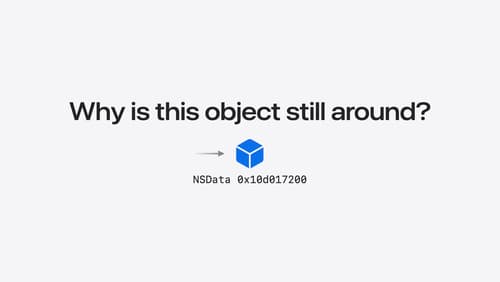weak let
Asked on 2025-06-16
3 searches
In the context of the WWDC sessions, the concept of "weak let" is not directly mentioned. However, the use of weak references in Swift is discussed in the session titled "Analyze heap memory." Weak references are used to avoid strong reference cycles, which can lead to memory leaks. When a weak reference is used, it is always an optional type and becomes nil after its destination is deinitialized. This is a common practice in Swift to manage memory effectively and ensure that objects are deallocated when they are no longer needed.
For more details on weak references and their use in avoiding strong reference cycles, you can refer to the session Analyze heap memory (26:51).

Analyze heap memory
Dive into the basis for your app’s dynamic memory: the heap! Explore how to use Instruments and Xcode to measure, analyze, and fix common heap issues. We’ll also cover some techniques and best practices for diagnosing transient growth, persistent growth, and leaks in your app.

Migrate your app to Swift 6
Experience Swift 6 migration in action as we update an existing sample app. Learn how to migrate incrementally, module by module, and how the compiler helps you identify code that’s at risk of data races. Discover different techniques for ensuring clear isolation boundaries and eliminating concurrent access to shared mutable state.

A Swift Tour: Explore Swift’s features and design
Learn the essential features and design philosophy of the Swift programming language. We’ll explore how to model data, handle errors, use protocols, write concurrent code, and more while building up a Swift package that has a library, an HTTP server, and a command line client. Whether you’re just beginning your Swift journey or have been with us from the start, this talk will help you get the most out of the language.
